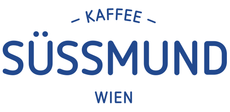If you have a suitable tamper and use it correctly, your espresso will taste significantly better. First, consider the ergonomics, i.e., how the tamper fits in your hand. Cheap models often have handles that are too small or awkward, or lack rounded edges. As a result, you have less control over the optimal alignment of the tamper and may tamp crookedly. If the design is seriously flawed, you'll quickly chafe your skin and develop blisters on your hands.
The material is also important. For example, a solid tamper usually has a stainless steel base. The handle can be made of various materials that provide a good grip and support. Handles are often made of wood, non-slip plastic, or stainless steel. Many coffee machines come with a makeshift tamper, usually made of plastic. These are neither ergonomic nor do they fit all the way to the rim of the filter.
The tamper's fit must be precisely aligned with the diameter of the sieve, or vice versa. If the tamper isn't flush, the coffee grounds won't be sufficiently compacted at the outermost edge. This results in the channeling described above and uneven extraction.
Even with a perfectly fitting tamper and properly constructed, water flows through the edge of the sieve slightly faster than in the center. This is why tamper bases are available in both straight and convex shapes. The convex shape compacts the coffee grounds more toward the edge than with flat tampers. This is intended to slow the water flow along the sieve wall. It's worth experimenting, especially with simple sieves with angled sieve walls.



